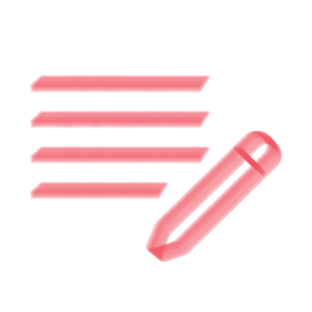What if students could design an entire city…based on the functions of a cell? With the built-in shape tools in Keynote, this classic project gets a digital twist where students can turn science concepts into a visual, creative masterpiece! Inspired by the Everyone Can Create: Design with Shapes project, this lesson lets students reimagine parts of a cell as city buildings, bridges, transportation systems, and more. Along the way, they’ll strengthen their understanding of cell functions, practice storytelling, and build digital design skills that will stick with them far beyond science class.
Objective
Students will design a digital city that represents the parts and functions of a cell using shapes in Keynote.
Success Criteria
- Students can explain the function of each cell part using creative city metaphors.
- Students combine, subtract, and format shapes in Keynote to design custom buildings.
- Students present their finished Cell City with clear visual and written explanations.
Why This Project?
Cells are complex—but this project breaks it down in a fun, visual way. When students turn cell organelles into parts of a city, they’re thinking deeply about what each structure does and how it relates to others. By working digitally in Keynote, every student has access to the same creative tools—no scissors, glue, or construction paper required! And by learning how to manipulate shapes, they’re also gaining 21st-century design skills they can transfer to future classes and careers.
The Process: How It All Comes Together
Kick-Off: Cell Functions Meet City Design (15 min)
Start by reviewing the basic parts of a cell: nucleus, mitochondria, cell membrane, ribosomes, vacuoles, and more. Then, ask: “If this cell were a city, what would each part be? What would be the power plant? The city hall? The delivery trucks?” Brainstorm city analogies together, encouraging creativity.
Explore Shapes in Keynote (10–15 min)
Before diving into city-building, walk students through the Keynote Shapes library and how to:
- Add shapes
- Combine, subtract, intersect, or exclude them
- Change colors, add shadows, and adjust transparency
This skill-building step connects directly to Everyone Can Create: Design with Shapes, a wonderful resource to make teaching this a breeze, while showing students how digital design allows for endless creativity with zero mess.
Design Time: Creating the Cell City (60-90 min, do what works best for you! Sometimes limiting time forces students to dive in and get creative!)
Students begin designing their Cell City:
- Use Keynote to lay out their city on a slide
- Represent each organelle with a creative building or structure
- Label each part and explain its metaphor (i.e., “The nucleus is City Hall—it controls everything!”)
Encourage students to combine multiple shapes to create custom icons. A mitochondria might become a high-tech power station (check out the video above!). A vacuole could be a giant storage warehouse.
Students can even combine shapes together to make all new shapes. Check out the video below for a quick demo, showing just one way shapes can be combined to create something totally new.
Add Voice, Movement & Interaction (Optional: 10–15 min)
Students can animate their cities or turn their slides into interactive presentations. Use Keynote’s Magic Move or basic animations to:
- Show delivery trucks (ribosomes) moving materials
- Have city hall light up to show decision-making
- Animate messages from cell parts using speech bubbles
Gallery Walk or Sharing Day (15–20 min)
Host a digital gallery walk or have students present their Cell Cities to the class. They could even create screen recordings explaining how all the parts of the cell work!
- “Which building did you enjoy designing most?”
- “What part of the cell did you have to think about in a new way?”
- “What would you add to your city next?”
Reflection: What We Learned
Tips & Tricks: Remind students that combining and subtracting shapes is like building with digital scissors and glue—try something new and see what happens!
Differentiation: Students who need support can use pre-made shape templates; advanced students can create more complex animated layouts.
Inclusion & Accessibility: This project works great with text labels, and visual scaffolds for multilingual learners or students with different learning needs.
Assessment: Use a rubric that assesses creativity, accuracy of cell part analogies, explanation of functions, and effective use of Keynote tools.
Designing a Digital Cell City in Keynote turns an abstract science concept into an imaginative design challenge. Students go beyond memorization and begin to deeply understand cell functions, all while building creative confidence, visual storytelling skills, and tech fluency. With unlimited creative supplies at their fingertips, every student gets the chance to shine—and create a cell that truly lives.
Have you tried turning science concepts into digital design projects? Let’s share more ways to blend creativity and content! 💡🧬🏙️
Learn to Design with Shapes today >












April 05, 2025 . English
English
Very creative connection Bethany! Students will certainly remember the parts of a cell as they connect it to something they are familiar with. And also great for learning design and digital art - love it!
This action is unavailable while under moderation.
This action is unavailable while under moderation.